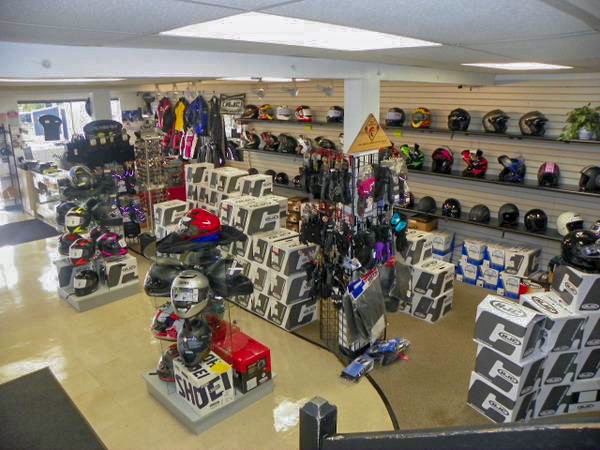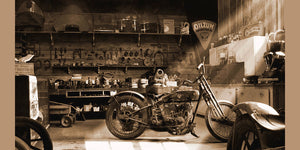Your Go-To Motorbike Shop for Quality Parts and Accessories
Your Go-To Motorbike Shop for Quality Parts and Accessories
Blog Article
Comprehending the Important Parts of a Motorbike: A Comprehensive Guide for Lovers
For motorcycle enthusiasts looking to boost their riding experience and guarantee their bikes run efficiently, understanding the essential elements of a motorcycle is critical. Each aspect, from the engine's elaborate functions to the critical function of the stopping systems, not just affects performance however likewise safety and security and comfort.
Engine Parts

The camshaft plays an essential duty in regulating the timing of the engine's valves, guaranteeing the specific opening and closing required for efficient gas and air intake, along with exhaust expulsion. This timing is important to keeping ideal engine efficiency and effectiveness. Additionally, the carburetor or gas shot system, depending upon the bike version, is in charge of blending air with gas in the right ratio for burning.
The cooling system, either air or liquid-based, works to preserve the engine's temperature level within operational restrictions, avoiding getting too hot and ensuring long life - motocross gear nz. Each component, thoroughly designed and incorporated, adds to the seamless procedure of the engine, specifying the motorbike's power output and overall efficiency
Transmission System
Integral to the bike's performance, the transmission system ensures reliable power transfer from the engine to the wheels. This system comprises a number of critical parts, including the clutch, transmission, and last drive, each playing a crucial role in equating the engine's power into motion. The clutch, normally run by a hand bar, offers to disengage the engine and involve from the transmission, enabling for smooth equipment adjustments and regulated velocity.
The transmission, frequently referred to as the transmission proper, consists of a collection of equipments that riders can manually move through to readjust the bike's rate and torque result. These gears are prepared in a series that makes it possible for the motorcycle to accelerate efficiently and keep optimal engine performance across numerous rates. The majority of motorbikes utilize a sequential gearbox, requiring the rider to move gears in a fixed order.
Braking Mechanisms
While comprehending the transmission system is essential to taking advantage of a motorcycle's power, similarly essential is the capability to manage and quit that power efficiently, which is where braking mechanisms enter into play. Brakes are vital for safety and efficiency, offering the cyclist with the essential control to navigate different surfaces and conditions. Commonly, motor bike helmets for sale motorcycles feature two sorts of braking systems: disc brakes and drum brakes.
Disc brakes are more prevalent in contemporary motorbikes due to their remarkable performance. This system offers better warm dissipation, consistent performance, and enhanced stopping power, specifically in wet problems.
Alternatively, drum brakes, though much less typical, are motorcycle seat cushion for long rides still located in some motorcycles. They work by pressing brake shoes against the inner surface of a drum affixed to the wheel. While typically less effective in heat dissipation and quiting power, drum brakes are simpler and much more cost-efficient.
Understanding these stopping systems' subtleties enables riders to keep their motorcycles effectively and appreciate the engineering that guarantees risk-free and effective stopping.
Suspension and Steering
Suspension and guiding systems are crucial elements that significantly influence a bike's handling and adventure convenience. The suspension system, including forks at the front and shock absorbers at the rear, takes in roadway irregularities, improving security and control. Front forks, generally telescopic or inverted, compress and rebound to minimize impacts, while back shock absorbers preserve tire contact with the road, important for traction and security.
Steering, focused around the handlebars, attaches the cyclist to the motorbike's directional control. The guiding head bearings Learn More make certain smooth procedure, enabling accurate ability to move. Correct positioning and maintenance of these bearings are important for foreseeable guiding action and minimizing rider fatigue.
The suspension's adjustability is an additional essential element; preload, damping, and rebound setups enable customization to suit different riding problems and designs. This versatility is crucial for maximizing performance, whether browsing city roads or tackling sturdy routes. Technologies like digital suspension systems offer real-time modifications, enhancing adventure high quality across varied terrains.

Electrical Solutions
After ensuring a smooth and regulated ride with efficient suspension and guiding systems, focus turns to the electric systems, a pivotal aspect of modern-day bikes. These systems play an essential duty not just in beginning the engine yet additionally in powering numerous elements that enhance the functionality and safety and security of the motorcycle.
At the heart of a motorcycle's electrical system is the battery, which stores electrical power required for beginning the engine and powering auxiliary systems - motocross gear. The alternator or generator, combined with the rectifier-regulator, makes sure the battery continues to be charged while the motorbike functions, transforming mechanical power into electric power and preserving voltage degrees
The ignition system, an additional crucial component, is responsible for igniting the air-fuel mixture in the engine's cyndrical tubes. Modern bikes often make use of an electronic ignition system, using greater effectiveness and dependability contrasted to traditional systems.
Illumination systems, including fronts lights, tail lights, and indications, are also essential, making sure presence and safety for the rider. Extra digital components such as sensors, control systems, and shows add to advanced features like fuel shot monitoring, anti-lock stopping systems (ABS), and electronic control panels, additionally enhancing the riding experience.
Verdict
A complete understanding of a bike's crucial elements, consisting of the engine, transmission system, stopping systems, suspension, guiding, and electrical systems, is essential for lovers intending to optimize comfort, efficiency, and safety. Mastery of these components permits informed choices regarding maintenance and upgrades, eventually enhancing the riding experience. By incorporating this knowledge, bikers can guarantee their bikes run at peak performance and integrity, therefore taking full advantage of both enjoyment and durability of their automobiles.
For motorbike fanatics looking to elevate their riding experience and guarantee their bikes run smoothly, understanding the crucial parts of a bike is paramount.Essential to the motorbike's performance, the transmission system makes sure reliable power transfer from the engine to the wheels.While understanding the transmission system is essential to using a motorcycle's power, equally important is the capacity to control and quit that power efficiently, which is where stopping mechanisms come right into play. Commonly, bikes include 2 types of stopping systems: disc brakes and drum brakes.
A comprehensive understanding of a motorcycle's important components, consisting of the engine, transmission system, braking mechanisms, suspension, guiding, and electric systems, is essential for fanatics aiming to enhance efficiency, security, and convenience.
Report this page